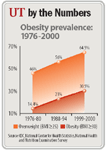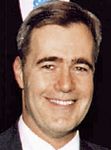Article
Endoscopic therapy shows high success rate for VUR
San Francisco—Endoscopic therapy for vesicoureteral reflux has a high success rate and a low risk of obstruction compared with open surgery, but multiple treatments may be necessary to achieve a cure, results of a meta-analysis of published studies indicate.

A single course of endoscopic treatment led to resolution of reflux in 75.68% of cases involving patients without duplicate collecting systems or neuropathic bladder. If an initial course of treatment is unsuccessful, a second endoscopic treatment had a success rate of almost 70%. Success rates decreased as the reflux grade increased, according to a report at the American Academy of Pediatrics Section on Urology annual meeting. The success rate was similar with different types of bulking agents.
"Grades I, II, and III seem to have a higher success rate," said Jack Elder, MD, director of pediatric urology at Rainbow Babies and Children's Hospital and Carter Kissell professor of urology at Case School of Medicine in Cleveland. "Patients with grades IV and V have lower success rates. Many of us feel that the best candidates with the highest chance of success with endoscopic treatment are the patients with low and medium grades of reflux."

The analysis involved 109 studies, each of which was reviewed and abstracted by two members of the panel of experts. Each article was discussed by the entire panel to decide whether to accept or reject the study for inclusion in the analysis. Ultimately, 46 articles were deleted, leaving 63 for inclusion in the analysis.
Overall success rate of 76% The median overall success rate from the studies included in the analysis was 75.68%. The success rate considered a single course of treatment and no duplicate ureters or neuropathic bladders.
The success rate was similar regardless of the type of bulking agent used-polytetrafluoroethylene (Teflon, DuPont, Wilmington, DE), bovine collagen (Contigen, Bard, Covington, GA), polydimethylsiloxane (Macroplastique, Uroplasty, Minneapolis), or dextranomer/hyaluronic acid copolymer-although Dr. Elder noted dextranomer/hyaluronic acid is the most commonly used agent in the United States. The success rate exceeded 70% in those with reflux grades I to III but declined to about 50% to 60% in those with grade IV and V reflux.
When one course of endoscopic treatment was unsuccessful, a second course was successful in 68.02% of cases. However, success dropped off markedly if a second course of treatment proved unsuccessful, as overall resolution after a third course of treatment was 33.9%. The aggregate success rate for one or more courses of endoscopic treatment was 85.05%.
Lower rate for duplicate ureters The success rate decreased to 50.12% for duplicate ureters. Additionally, procedures involving neuropathic bladder had a lower success rate of 61.64%. The success rate was similar for children (72.88%) and adults (65.17%).
The analysis also considered the use of endoscopic treatment following previous open ureteral reimplantation. In those cases, the success rate with endoscopic treatment of VUR was 65.17%.
Febrile urinary tract infection was uncommon, occurring in 0.75% of patients, Dr. Elder said. Cystitis occurred in 6% of cases. However, relatively few studies included data on the incidence of UTI. The probability of obstruction or need for dilation was 0.52%.
"The results of this analysis show that endoscopic treatment of reflux compares favorably with open surgery," Dr. Elder said. "Endoscopic treatment has a high success rate with a lower risk of obstruction compared to open surgery, although multiple treatments may be necessary to achieve a cure in some cases."















